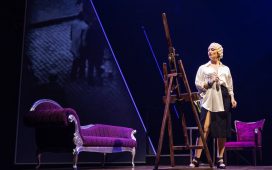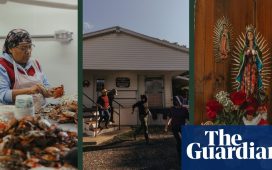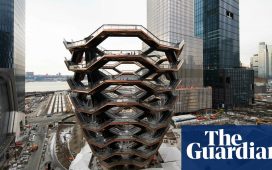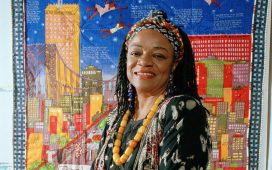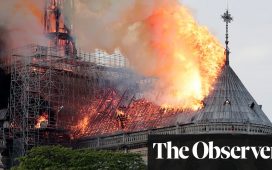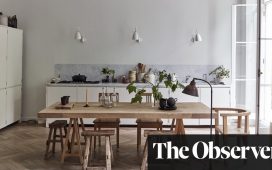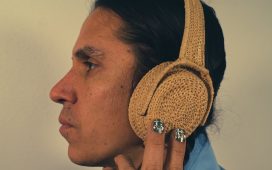Thaddaeus Ropac’s new gallery will be located in Seoul’s Hannam-dong district, occupying the first floor of the Fort Hill building
Courtesy of Thaddaeus Ropac
Thaddaeus Ropac is to open its first Asian gallery, in Seoul, this October as the South Korean capital attracts increasing attention from the global art industry.
Located in Seoul’s Hannam-dong district, the gallery will take over the first floor of the Fort Hill building, designed by Juhwan Park, which won both the Korean National Architecture Award and Seoul Architecture Award in 2011. Teo Yang Studio has been brought on by Ropac to design the interiors and the gallery will be led by Kyu Jin Hwang, Ropac’s Asia director, who will continue to split her time between Seoul and London.
South Korea’s economy has proven remarkably resilient through the pandemic—thanks to its effective containment of the Covid-19 virus, its GDP contracted by only 1% last year and is forecast to grow by around 3% in 2021, according to the OECD.
“We’ve been thinking about Asia for quite some time and been building up an Asian team, and considering several places [in which to open a gallery],” Thaddaeus Ropac tells The Art Newspaper. “I’ve built up a relationship with Seoul over the past 20 years and it had to do with artists first—we had our first show with Lee Bull in 2007 and did an exhibition with Lee Ufan in Paris in 2009. And we were involved in introducing George Baselitz into Korea, organising the first major museum show at the National Museum of Modern and Contemporary Art Korea in 2009. It was years in the making and we were very involved.” He adds: “I love the city, I love the sophistication of the Koreans.”
Ropac say the gallery already has “great contacts” with South Korean artists, collectors and institutions, so opening a gallery seemed “the right thing to do.” Lee Kun-hee, the billionaire South Korean chairman of the Samsung group who died last October, was a client of the gallery’s, buying several artists from its programme for his vast collection—last month, Lee’s family agreed to donate around 23,000 works of art from his collection to South Korean museums, according to The Korea Herald.
Kyu Jin Hwang, who will direct Ropac’s Seoul gallery
Courtesy of Thaddaeus Ropac
The Fort Hill building, itself, swung the decision to open in Seoul, Ropac says: “With the galleries, it’s also very much about the space—like Ely House in London. It has to inspire. We looked at difference spaces in different [Asian] countries and when this space was shown to us, I was quite taken by it. It’s very different to our galleries in Europe or Ely House.”
Ropac is keen to emphasise that this is the first Asian home for the gallery, not the only one and he has not discounted Hong Kong (“a very happening place with a great gallery scene”). “This is the beginning of a journey in Asia, it’s not our last gallery in Asia!” he says.
“The attractive point for international organisations is that South Korea does not have any VAT or customs [charges] on art,” Ropac says. “Contrary to China which is very expensive to bring art into. But this is long Hong Kong and Singapore, no VAT or customs. So it’s very easy to ship art in and out”. He adds: “There is no censorship to my knowledge. This again makes it very appealing as we went through so many censorship processes with [exhibiting in] China.”
Other international galleries are upping their presence in Seoul—last month, Pace (which first opened here in 2017) announced it is expanding to a bigger space occupying two floors of Le Beige Building, also in Hannam-dong. The new gallery opens on 27 May with a Sam Gilliam exhibition. Marc Glimcher, Pace’s president and chief executive says the city’s “popularity is about to explode. Seoul is on the brink of new cultural investment, with major museums and art fairs interested in the opportunities it has to offer.” The Berlin-based dealer Johann König has also just opened a gallery in the Seoul district of Gangnam together with the luxury clothing brand MCM. “Korea has a strong position in the art market,” König says.
Art Busan opens in Korea this week (14-16 May) and there are continuing rumours that another art fair is eyeing Seoul—last September, the Korean newspaper Hankyoreh reported that Frieze is planning a new fair in the South Korean capital in September 2022. Frieze has not commented on the subject other than to say: “We are always looking at new opportunities and have great relationships with Korean galleries, institutions and collectors. Anything is possible, but there is nothing to report at this stage.”
Ropac says: “The Frieze news came in in the middle of when we were already working on our space in Seoul…I cannot speak for Frieze but I know that these talks are really intense, I think it is very serious.” He adds:“It was funny because we reached our to them [Frieze] and said ‘is it true?’ And they reached out to us and said, ‘is it true?!’ We were kind of reconfirming how strong Korea is to each other.”
The subject of Ropac’s opening show in Seoul this autumn is yet to be announced, but it will be “an important European or American artist”.



